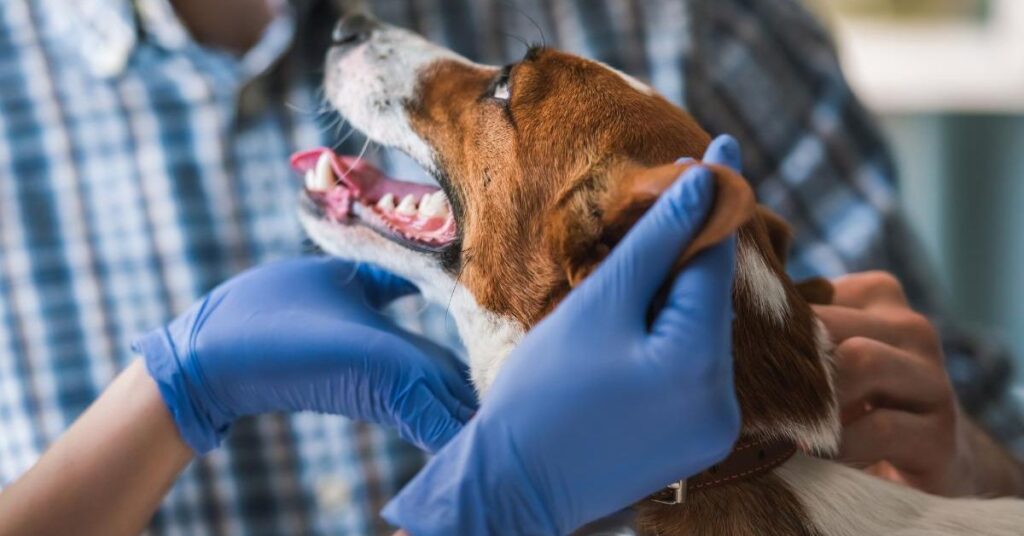Theophylline is a medication sometimes used to treat respiratory conditions in dogs, such as asthma or chronic obstructive pulmonary disease (COPD). Whether a dog can stay on theophylline depends on various factors, including the dog’s specific condition, overall health, and how well they respond to the medication.
Unveiling the mystery behind long-term theophylline use in dogs, How long can a dog safely stay on theophylline? As a potent medication used to manage respiratory issues in our four-legged friends, understanding the optimal duration of theophylline treatment is paramount.
Join us on a journey through canine health as we uncover the facts, myths, and best practices surrounding this medication, ensuring your furry companion receives the best care possible.
Theophylline for dogs discontinued

Theophylline is a drug that has been used to treat respiratory problems in dogs, such as asthma and chronic obstructive pulmonary disease (COPD). However, due to certain reasons, its use in veterinary medicine has been discontinued.
Theophylline worked by relaxing the muscles in the airways, making it easier for dogs to breathe. It was often prescribed to dogs with respiratory conditions to help them breathe more comfortably. However, theophylline also had some potential side effects, such as vomiting, diarrhea, and restlessness.
Recently, theophylline has been discontinued for use in dogs. This means that veterinarians are no longer prescribing it to treat respiratory problems in dogs. Instead, they are using other medications and treatments to help dogs with these conditions.
Theophylline for dogs dosage chart
Theophylline is a medicine that can help dogs with breathing problems like asthma. It comes in different forms, like tablets or liquid, and your vet will decide which is best for your dog. The dosage of Theophylline depends on your dog’s weight and the severity of their condition. Here is a general idea of how much Theophylline a dog might take:
- For dogs weighing 10-20 pounds: 50-100 mg twice a day
- For dogs weighing 20-30 pounds: 100-150 mg twice a day
- For dogs weighing 30-40 pounds: 150-200 mg twice a day
Your veterinarian will provide you with the exact dosage and schedule for your dog. It’s essential to follow their instructions carefully to ensure your dog gets the right amount of medication. Always consult your vet before giving your dog any medication, including Theophylline.
Theophylline for dogs reviews

Theophylline is a medicine that helps dogs with breathing problems. It’s like a superhero for their lungs! When dogs have trouble breathing, Theophylline comes to the rescue by relaxing the muscles in their airways, making it easier for them to take in air.
It’s like giving them a big, comfy pillow to breathe on! Many dogs with asthma or other lung problems feel much better after taking Theophylline, and they can run and play like normal dogs again. It’s a really helpful medicine for our furry friends.
Side effects of theophylline for dogs
Side effects of theophylline in dogs can vary, with some experiencing mild discomfort while others may have more severe reactions. Common side effects include gastrointestinal upset, such as vomiting or diarrhoea, which can occur especially when starting the medication or if the dosage is too high. Some dogs may also exhibit restlessness, increased heart rate, or tremors as a result of theophylline.
In rare cases, more serious side effects like seizures or arrhythmias may occur, especially if theophylline levels in the bloodstream become too high. It’s crucial for pet owners to monitor their dog closely for any signs of adverse reactions and promptly report them to their veterinarian. Adjustments to the dosage or alternative medications may be necessary to mitigate these side effects and ensure the dog’s safety and comfort.
Theophylline dogs dosage
Theophylline dosage for dogs varies depending on factors such as the dog’s weight, age, and the severity of the respiratory condition being treated. Generally, the dosage is calculated in milligrams per kilogram of body weight. Veterinarians use dosage charts and their expertise to determine the appropriate starting dose and any necessary adjustments.
It’s crucial for pet owners to follow the veterinarian’s instructions carefully when administering theophylline to their dogs. Starting with the correct dosage and monitoring the dog’s response closely is essential. Any concerns or changes in the dog’s condition should be promptly discussed with the veterinarian to ensure the dosage remains appropriate for the dog’s needs.
ALSO READ THIS ; IS BONA SAFE FOR PETS
Theophylline for dogs with heart disease
Theophylline is a medication used to help dogs with heart disease. Dogs with heart problems can have difficulty breathing because their hearts are not working as well as they should. Theophylline works by relaxing the muscles around the airways in the lungs,
which makes it easier for the dog to breathe. It comes in the form of pills or liquid medicine, and the dose is determined by the dog’s weight and condition. It’s important to give the medication exactly as prescribed by the veterinarian. Like any medication,
Theophylline can have side effects, such as upset stomach, vomiting, or restlessness. If the dog experiences any side effects, it’s important to contact the veterinarian. Overall, Theophylline can help improve the quality of life for dogs with heart disease by making it easier for them to breathe.
Theophylline for dogs collapsed trachea
Theophylline is sometimes prescribed for dogs with collapsed trachea to help manage their respiratory symptoms. This medication works by relaxing the muscles in the airways, making it easier for the dog to breathe. It can provide relief from coughing wheezing, and other breathing difficulties associated with collapsed trachea.
Before starting theophylline treatment for a dog with collapsed trachea, veterinarians typically conduct a thorough examination to assess the severity of the condition and the overall health of the dog. They may also perform diagnostic tests such as X-rays or bronchoscopy to confirm the diagnosis and rule out any underlying issues.
Alternative to Theophylline for dogs :
Understanding Why Alternatives Are Needed Theophylline is a medication that helps dogs with heart disease breathe better, but some dogs may not tolerate it well or experience side effects. In such cases, veterinarians may recommend alternative treatments to manage their condition effectively.
Exploring Alternative Medications Veterinarians may prescribe other medications as alternatives to Theophylline. These may include bronchodilators, which relax the muscles around the airways, and diuretics, which reduce fluid buildup in the lungs. These medications can help improve breathing and overall heart function in dogs with heart disease.
How much theophylline can I give my dog?
Determining the appropriate dosage of theophylline for your dog requires veterinary guidance. Dosage depends on factors such as your dog’s weight, age, and the severity of their respiratory condition. Typically theophylline dosage is calculated in milligrams per kilogram of body weight.
Your veterinarian will assess your dog’s health and prescribe the starting dosage accordingly. It’s crucial to follow the veterinarian’s instructions precisely and avoid adjusting the dosage without professional guidance. Regular monitoring by the veterinarian ensures theophylline is administered safely and effectively.
What is the best medicine for upper respiratory infection in dogs?
The best medicine for an upper respiratory infection in dogs depends on the specific cause and severity of the infection. Your veterinarian will determine the most appropriate treatment based on factors such as the type of pathogen involved and your dog’s overall health.
Antibiotics may be prescribed if the infection is bacterial, helping to fight off the bacteria causing the illness. Antiviral medications may be used for viral infections, although supportive care such as hydration and nutrition is often the main focus since many viral infections are self-limiting.
How can I treat my dog’s asthma at home?
Treating your dog’s asthma at home starts with identifying and minimizing potential triggers such as dust, pollen, and smoke in your living environment. Ensure your home is well-ventilated and regularly cleaned to reduce allergens.
Maintain a healthy weight for your dog through proper diet and regular exercise as obesity can exacerbate asthma symptoms. Consider using a humidifier in your home to keep the air moist, which can help ease breathing for your asthmatic dog.
Providing a calm and stress-free environment can also be beneficial as stress can worsen asthma symptoms. Monitor your dog closely for any signs of respiratory distress or exacerbation of symptoms and consult with your veterinarian for guidance on managing your dog’s asthma at home.
Frequently asked question
How long can a dog stay on Theophylline?
The duration a dog can stay on Theophylline varies depending on the dog’s condition and response to the medication. Some dogs may only need it for a short period, while others may require long-term use under veterinary supervision.
Is it safe for dogs to be on Theophylline for a long time?
Theophylline can be safe for dogs when used as prescribed by a veterinarian. Regular monitoring is essential for long-term use to ensure effectiveness and minimize potential side effects.
Can a dog stop taking Theophylline once they start feeling better?
It’s important not to stop Theophylline suddenly, even if the dog seems to be improving. Abrupt discontinuation can lead to a worsening of symptoms. The veterinarian will determine when it’s appropriate to adjust or discontinue the medication.
What signs indicate that a dog may need to stop taking Theophylline?
If a dog experiences severe side effects, such as vomiting, tremors, or rapid heart rate, it may indicate the need to adjust or discontinue Theophylline. It’s crucial to consult the veterinarian immediately if such symptoms occur.
Can Theophylline be given to dogs with other health conditions?
Theophylline should be used with caution in dogs with certain health conditions, such as liver disease, heart disease, or seizures. It’s important to inform the veterinarian about all the dog’s health conditions and medications to avoid potential interactions or complications.
Conclusion
The duration for which a dog can stay on Theophylline depends on the underlying condition being treated and the dog’s response to the medication. Some dogs may only need to take Theophylline for a short period to manage acute breathing problems,
While others with chronic conditions like heart disease may require long-term or even lifelong treatment. It’s important for dog owners to work closely with their veterinarians to monitor their dog’s health and adjust the treatment plan as needed. Regular check-ups and monitoring can help ensure that the dog is receiving the appropriate care and medication for their condition.







